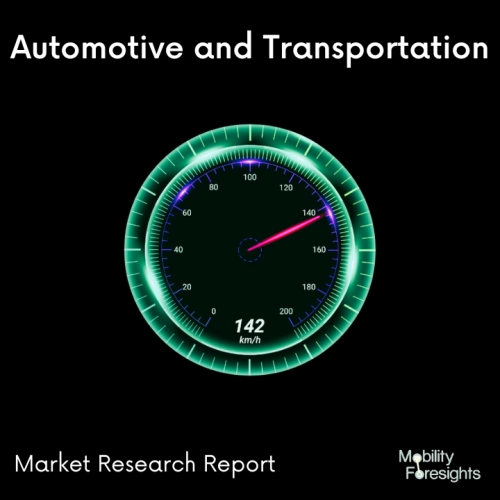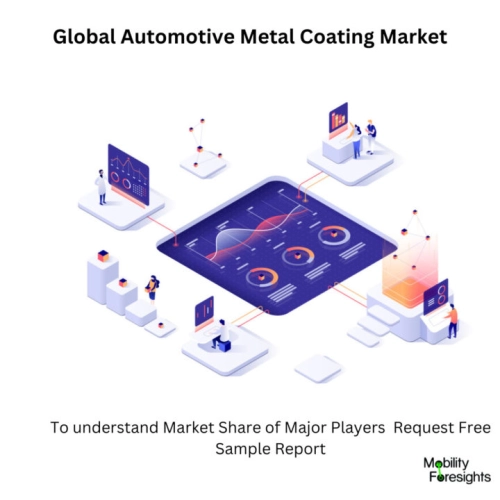
- Get in Touch with Us

Last Updated: Apr 25, 2025 | Study Period: 2023-2030
The application of protective coatings to various metal surfaces in automobiles is referred to as automotive metal coating. These coatings are intended to improve the aesthetic appeal of the vehicle while adding an additional layer of defense against corrosion, abrasion, chemicals, and other environmental variables.
Automotive metal coatings come in a variety of varieties, each with a unique use and set of properties. The following coatings are frequently used in the automotive sector:
Coatings for Primer: The first layer to be applied to bare metal surfaces is primer coatings. They promote the link between the metal and successive layers of coating while providing adhesion and corrosion resistance.
Basecoat: The pigmented coating that gives the car the proper color and look is called a basecoat. Typically, it consists of a blend of colors, solvents, and binders. Depending on the intended finish, basecoats might be pearlescent, metallic, or solid.
Clearcoat: Used over basecoat to add shine and durability, the clearcoat is a transparent coating. The underlying layers are shielded from UV rays, rust, and scratches. The typical materials used in clearcoats are acrylic, polyurethane, or a combination of the two.
Electrocoat: An electrically charged metal object is immersed in a paint bath during the electrocoating process, sometimes referred to as electrodeposition or e-coating. A homogenous and corrosion-resistant covering is created on the metal surface as a result of the paint particles being drawn to it. Metal chassis, frames, and other structural elements are frequently protected with electrocoating.
Powder Coating: Dry powder is electrostatically applied to a metal surface in powder coating. Due to the electrostatic charge, the powder particles stick to the metal and are then baked to form a tough coating. On wheels, trim, and other metal parts, powder coating offers exceptional protection against corrosion, impacts, and chemicals.
These are but a few of illustrations of automobile metal coatings. Other specialist coatings, such as high-temperature coatings for exhaust systems or anti-scratch coatings for exterior trimmings, may be employed for certain uses. The choice of coating is influenced by various elements, including the desired look, the need for durability, and the particular metal surface being coated.

The Global Automotive Metal Coating Market accounted for $XX Billion in 2022 and is anticipated to reach $XX Billion by 2030, registering a CAGR of XX% from 2023 to 2030.
An assortment of electrocoating (e-coat) products from PPG Enviro-Prime Epic 200R coatings, which cure at lower temperatures than rival technologies, have been introduced. Customers can benefit from the products' reduced energy use and CO2 emissions at manufacturing plants, among other sustainability advantages.
Conventional e-co is a game-changing technology. In order to cure bigger substrates and intricate assemblies, it often needs higher oven temperatures, which leads to an uneven look and color variations.
A more environmentally friendly alternative is offered by the PPG Enviro-Prime EPIC 200R platform, which guarantees well-cured films at lower baking temperatures without compromising manufacturing efficiency or coating performance.
PPG is concentrating on working in tandem with clients to deliver market-leading technologies and digital solutions that boost productivity and sustainability as part of its growth plan.
| 1 | Market Segmentation |
| 2 | Scope of the report |
| 3 | Abbreviations |
| 4 | Research Methodology |
| 5 | Executive Summary |
| 6 | Introduction |
| 7 | Insights from Industry stakeholders |
| 8 | Cost breakdown of Product by sub-components and average profit margin |
| 9 | Disruptive innovation in the Industry |
| 10 | Technology trends in the Industry |
| 11 | Consumer trends in the industry |
| 12 | Recent Production Milestones |
| 13 | Component Manufacturing in US, EU and China |
| 14 | COVID-19 impact on overall market |
| 15 | COVID-19 impact on Production of components |
| 16 | COVID-19 impact on Point of sale |
| 17 | Market Segmentation, Dynamics and Forecast by Geography, 2023-2030 |
| 18 | Market Segmentation, Dynamics and Forecast by Product Type, 2023-2030 |
| 19 | Market Segmentation, Dynamics and Forecast by Application, 2023-2030 |
| 20 | Market Segmentation, Dynamics and Forecast by End use, 2023-2030 |
| 21 | Product installation rate by OEM, 2023 |
| 22 | Incline/Decline in Average B-2-B selling price in past 5 years |
| 23 | Competition from substitute products |
| 24 | Gross margin and average profitability of suppliers |
| 25 | New product development in past 12 months |
| 26 | M&A in past 12 months |
| 27 | Growth strategy of leading players |
| 28 | Market share of vendors, 2023 |
| 29 | Company Profiles |
| 30 | Unmet needs and opportunity for new suppliers |
| 31 | Conclusion |
| 32 | Appendix |